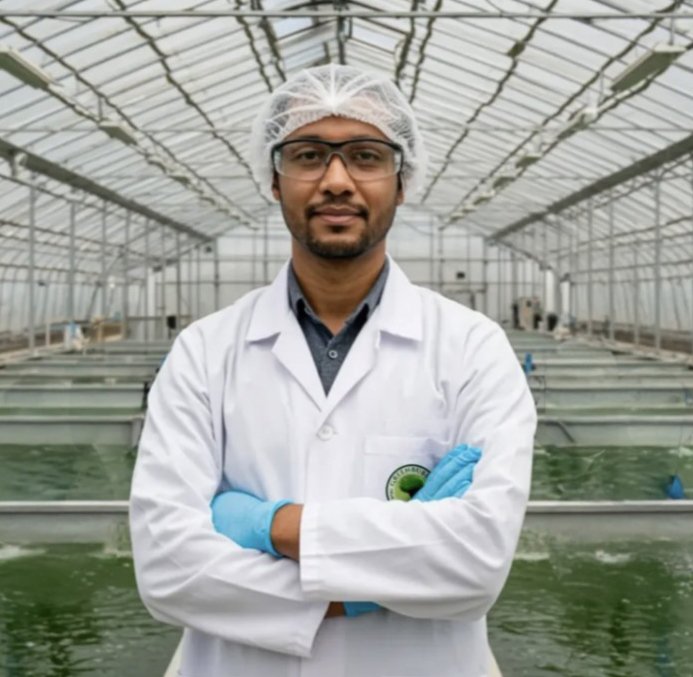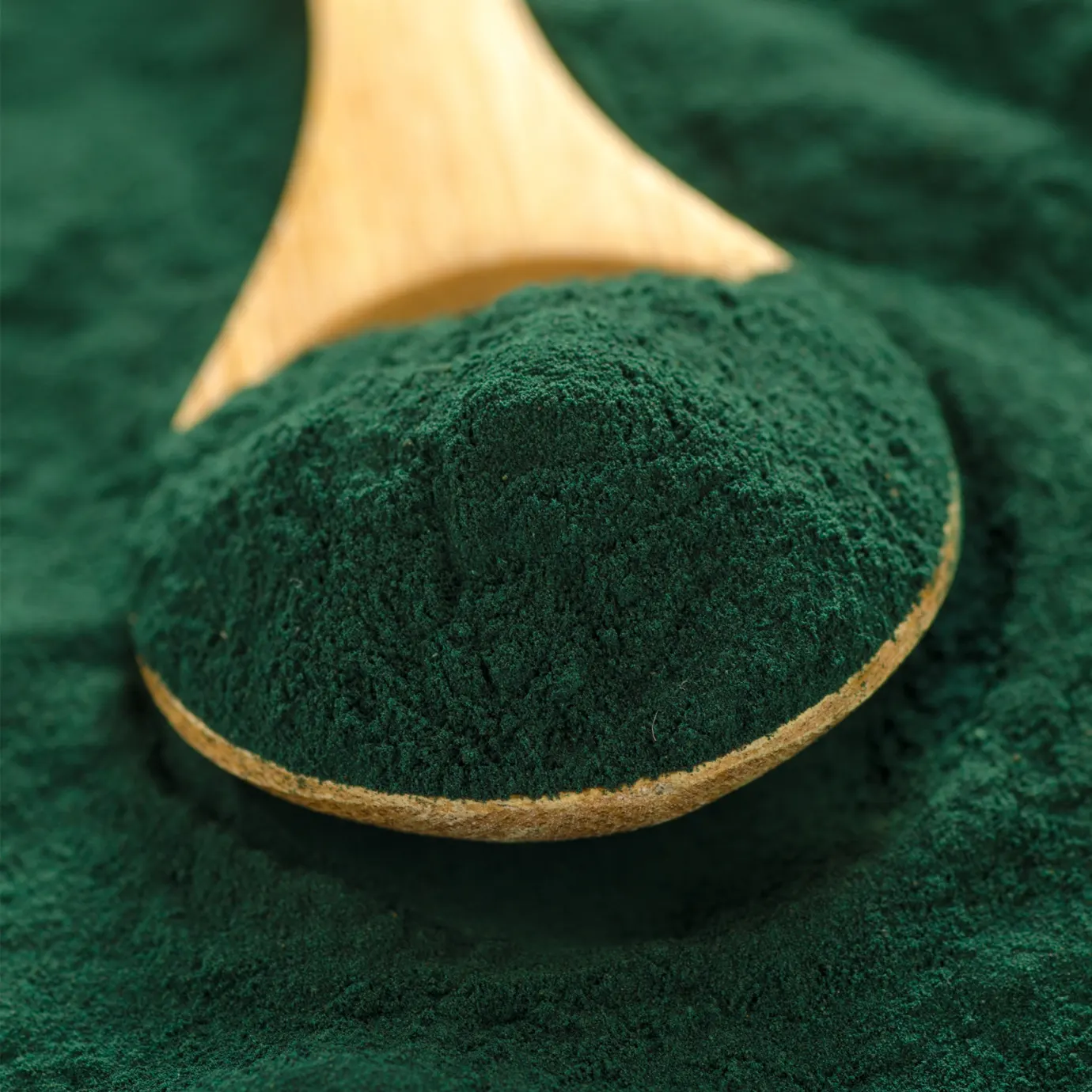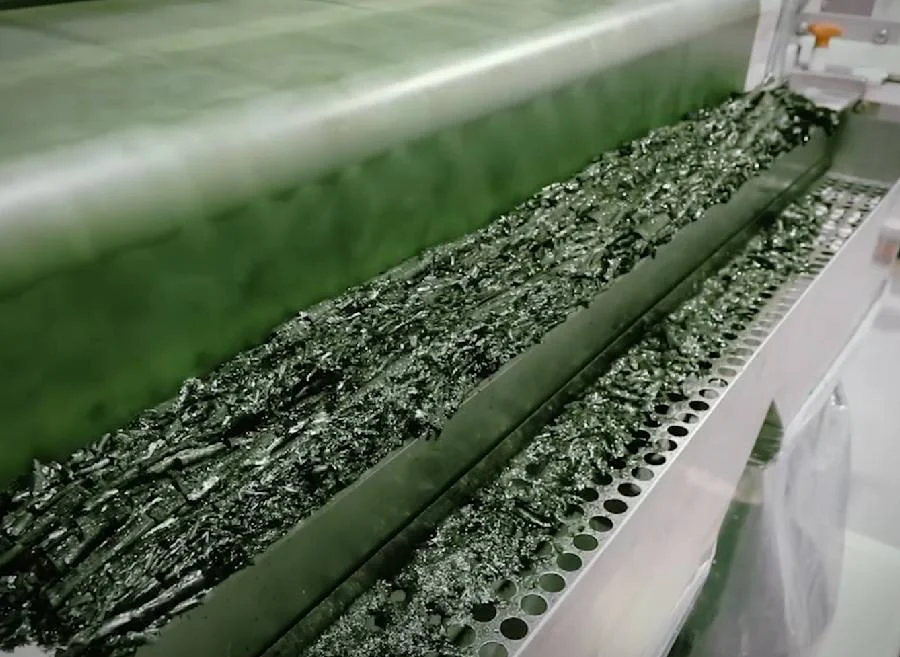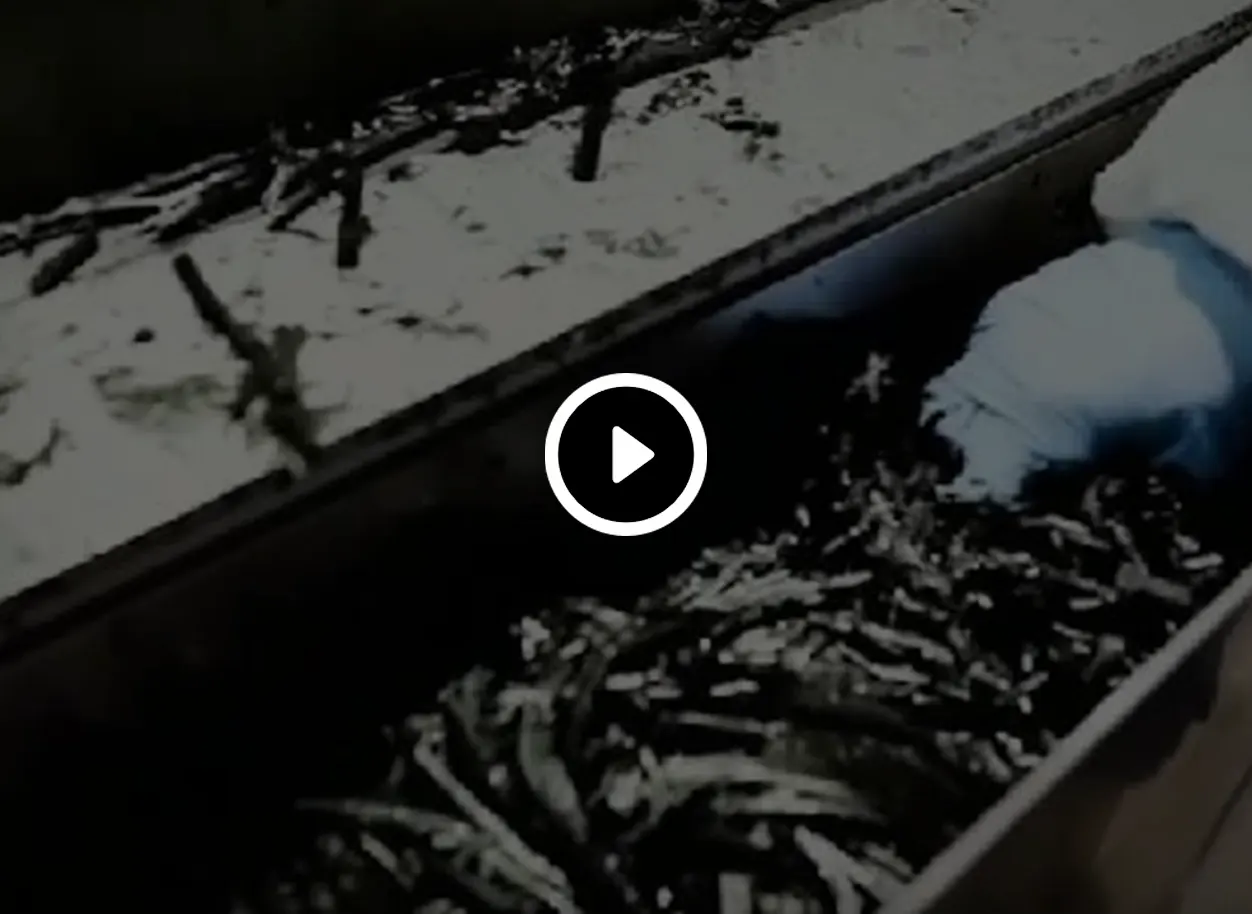Revolutionizing Spirulina Drying With RWD Technology
Spirulina contains temperature-sensitive nutrients like phycocyanin, which degrade easily under conventional high-heat drying. The RWD (Refractive Window Dryer) uses targeted infrared rays to gently evaporate moisture at just 45–50°C — ensuring your spirulina retains its natural color, aroma, and nutritional strength.
Unlike traditional dryers, the RWD system avoids thermal stress, reduces risk of contamination, and operates with zero labor intervention. It’s a smart, continuous drying solution designed for both mid- and large-scale spirulina farms looking to meet global organic and nutraceutical standards.
Smart Engineering for Nutritional Retention
Traditional dryers often overheat and over-dry, damaging the delicate nutrient profile of spirulina. Our RWD Dryer solves this with refractive window technology that selectively targets water molecules while protecting active compounds like proteins, pigments, and essential fatty acids.
The system operates within a narrow thermal window, making it the ideal choice for farmers who want to produce organic-grade flakes or powder with maximum market value.
Challenges Addressed With RWD Drying
-
Temperature Sensitivity
The system never exceeds 50°C, protecting phycocyanin and other active compounds. -
Quick Contamination Prevention
Swift drying eliminates bacterial risks and preserves enzymes. -
No Sun Dependency
Fully enclosed drying prevents pigment degradation caused by sunlight. -
Zero Labor
Autonomous design removes manual intervention, making your process scalable and seamless. -
Energy Efficient
Uses significantly less electricity compared to spray or drum dryers. -
Refractive Window Concept
Maintains the integrity of spirulina throughout the drying cycle.
Smart Drying, Maximum Nutrition

At Greenbubble, we understand the real value of spirulina lies in its nutrients — and we’ve engineered the RWD Spirulina Drying System to protect every bit of it. Whether you’re producing flakes for food-grade consumption or powder for supplements, our system ensures every batch meets high purity and consistency benchmarks.
Designed for scalability, the RWD dryer integrates easily into your existing infrastructure and enables a continuous drying flow. The result? A cleaner product, fewer operational hiccups, and a smoother path to certifications like USDA Organic or GMP.
With rising global demand for clean-label superfoods, drying quality is not just an operational choice — it’s a market advantage. Our RWD system delivers that edge.
Let’s dry smart. Let’s dry better.
Talk to Our Experts or Book a Demo today.
Spirulina Farming FAQs
Everything You Need to Know About Commercial Spirulina Farming – From Setup to Profitability!
Following parameters need to be met while selecting land to set up a plant.
- low cyclone area
- flat land
- road approach
- less rainfall
- no hills or mountain shadow
- high temperature and dry land
- Mild or higher temperatures in winters
- water source (preferably ground water)
- Spirulina usually grows in hot & extremophile conditions and can sustain very high temperatures
Both Central & State Governments have multiple schemes and subsidies depending on the zone or region where the project will be built. These schemes are available with capital subsidy incentive, interest subsidy incentive and as financing schemes – subject to availability based on the applicant’s profile, state & Region.
Yes, the demand for spirulina in India is rising due to its superfood status and benefits like high protein (60%+), antioxidants, balanced amino acid profile and essential vitamins. The nutraceutical, pigment industries and cosmetic industries drive the bulk demand, with additional interest from the animal feed, aquaculture sectors and bio fertilizers. Health-conscious consumers are increasingly seeking organic spirulina, making certified farms more competitive. However, export markets (EU, USA) offer higher profit margins and volumes because of higher consumption and awareness in their respective countries.
Spirulina quality is assessed in laboratories for key parameters like protein content (≥60%), phycocyanin levels (≥15%), heavy metals (lead, mercury, arsenic), microbial contamination, and purity. The Certificate of Analysis (COA) from third-party labs ensures compliance with global standards like USDA Organic, EU Organic, GMP, and HACCP. A simple at-home test includes checking colour (deep green-blue) and smell (fresh, non-fishy). For commercial-grade quality assurance, regular lab testing and batch tracking are essential.
Spirulina is relatively easy to cultivate under the right conditions, but maintaining high quality can be challenging. It thrives in high-pH, mineral-rich water with consistent agitation and ample sunlight. However, farms must closely monitor for contamination—such as heavy metals, harmful bacteria, and cross-contamination with other algae. Maintaining an optimal pH level (between 9 and 11) and using controlled drying methods are essential to preserve its nutritional value. Scaling up production requires automation of processes like filtration, harvesting, drying, and packaging, making commercial farming significantly more complex than small-scale setups.
Yes, India exports spirulina, but it requires strict regulatory compliance. To export, farms must obtain FSSAI, USDA Organic, and EU Organic certifications, ensuring compliance with global quality standards. Countries like the USA, EU, and Japan demand batch tracking, third-party lab testing (COA), and HACCP/GMP practices to verify purity. Organic-certified spirulina fetches higher prices, but maintaining consistent quality, low contamination levels, and proper documentation is crucial for global acceptance.
The ideal tank size for spirulina farming depends on production goals. Small-scale hobby farms can start with 1,000-5,000 litres (10-50 sq. m. tanks), while commercial farms require multiple tanks ranging from 4lakh to 8lakh litres for viability and to meet market demand. Tanks should be food-grade, contamination-free, and have an efficient agitation system to ensure even nutrient distribution. The depth should be around 20-30 cm, allowing optimal light penetration for photosynthesis. Regular pH, temperature, and contamination checks are crucial for consistent yields.
There are multiple Spirulina species, and the best one depends on the intended use. Arthrospira platensis is widely used due to its high protein content (60–70%), β-carotene, and phycocyanin levels. It is also GRAS-approved by the FDA, which makes it easier to market and sell. When choosing Spirulina, opt for organic-certified, lab-tested products with high phycocyanin content (≥15%) for the best health benefits. Low-quality, mass-produced Spirulina may contain toxins, heavy metals, or reduced nutrient levels. Therefore, selecting products that come with a valid Certificate of Analysis (COA) is essential.
Spirulina is expensive due to its high-quality control standards and nutrient-rich composition. Factors like pH balance, controlled agitation, organic compliance, and industrial nutrition preserving dryers increase production costs. Organic-certified spirulina requires third-party testing (HACCP, GMP, USDA Organic) for contaminants like heavy metals and bacteria, adding to expenses. Additionally, import restrictions and packaging for nutrient retention contribute to the high pricing. Despite the cost, its superior nutritional profile and increasing demand justify the premium.
Countries like the Japan, Thailand, and China lead in commercial spirulina production. France and Germany also produce premium-grade spirulina in small scales, often cultivated in controlled greenhouse environments. Indian spirulina has strong potential, but farms must focus on organic certification and contamination-free production to compete with global suppliers.
Yes, the demand for spirulina in India is rising due to its superfood status and benefits like high protein (60%+), antioxidants, balanced amino acid profile and essential vitamins. The nutraceutical, pigment industries and cosmetic industries drive the bulk demand, with additional interest from the animal feed, aquaculture sectors and bio fertilizers. Health-conscious consumers are increasingly seeking organic spirulina, making certified farms more competitive. However, export markets (EU, USA) offer higher profit margins and volumes because of higher consumption and awareness in their respective countries.
To start a spirulina farm, you need a warm climate (25-50°C), Fresh potable water and a contamination-free environment. Begin by setting up growth tanks (preferably food-grade material), an agitation system, and an organic nutrient supply. Ensure regular water testing, lab analysis for purity, and compliance with organic standards for targeting premium markets. Drying and packaging should use low-heat methods to retain nutrients. Marketing strategies should focus on B2B (nutraceuticals, pigment, cosmetics) and direct-to-consumer (powders, tablets, supplements). Hiring consultants can help you cover all bases and avoid costly mistakes during setup and operation.
The cost of starting a spirulina farm varies based on scale and automation level. A small-scale Hobby farm (1,000 sq. ft.) may cost around ₹5-10 lakh, while a commercial setup can exceed ₹1CR due to expenses like land preparation, building costs, Machineries, Raceway tanks construction, agitation systems, working capital, electrical and plumbing, lab setup many other management and administrative expenses. Key costs include Civil works, harvesting, drying system (Industrial nutrition preserving dryers), certification expenses (like FSSAI, USDA Organic, EUO, ECOCERT, HACCP, GMP) and working capital. While initial investment is high, proper planning, market positioning and quality assurance can yield significant returns.
Spirulina farming can be highly profitable, but success depends on factors like production scale, automation, organic certification, Quality and market demand. While some claim an ROI of 300% within months, realistic profitability takes 2-3 years due to high setup costs for infrastructure to reduce labour dependency, increased up time and meet the quality standards. Organic-certified spirulina fetches premium prices in domestic and international markets, making it a viable long-term investment. However, strict quality control, regulatory compliance, and a reliable distribution network are key to ensuring consistent profitability.
Related Services
Let us help you




